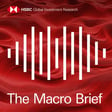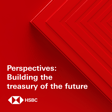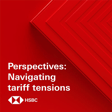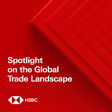
HSBC’s Sibos Spotlight – Digital Trade Finance Innovations: Real-life Benefits for Treasurers
The application of digital innovation in the context of the trade finance space cannot be understated. In the latest episode of our Sibos miniseries, HSBC’s Vinay Mendonca and Contour’s Carl Wegner discuss how, with powerful API tools at their disposal and a willingness to co-create, treasurers can capitalise on the increasingly digital trade finance environment. Our guests provide early insight into how APIs are being leveraged to facilitate data-based credit decisioning.
This is HSBC’s Sibos Spotlight, a podcast mini-series in collaboration with Treasury Management International (TMI). Throughout this series we will explore the critical topics impacting the transaction banking landscape, specifically looking at sustainability, digitisation and innovation. We will examine the opportunities and challenges disrupting the areas of payments, trade, custody and traditional business models.
To find out more about HSBC's transaction banking insights and presence at Sibos 2022, visit here.
Hosted on Acast. See acast.com/privacy for more information.

















